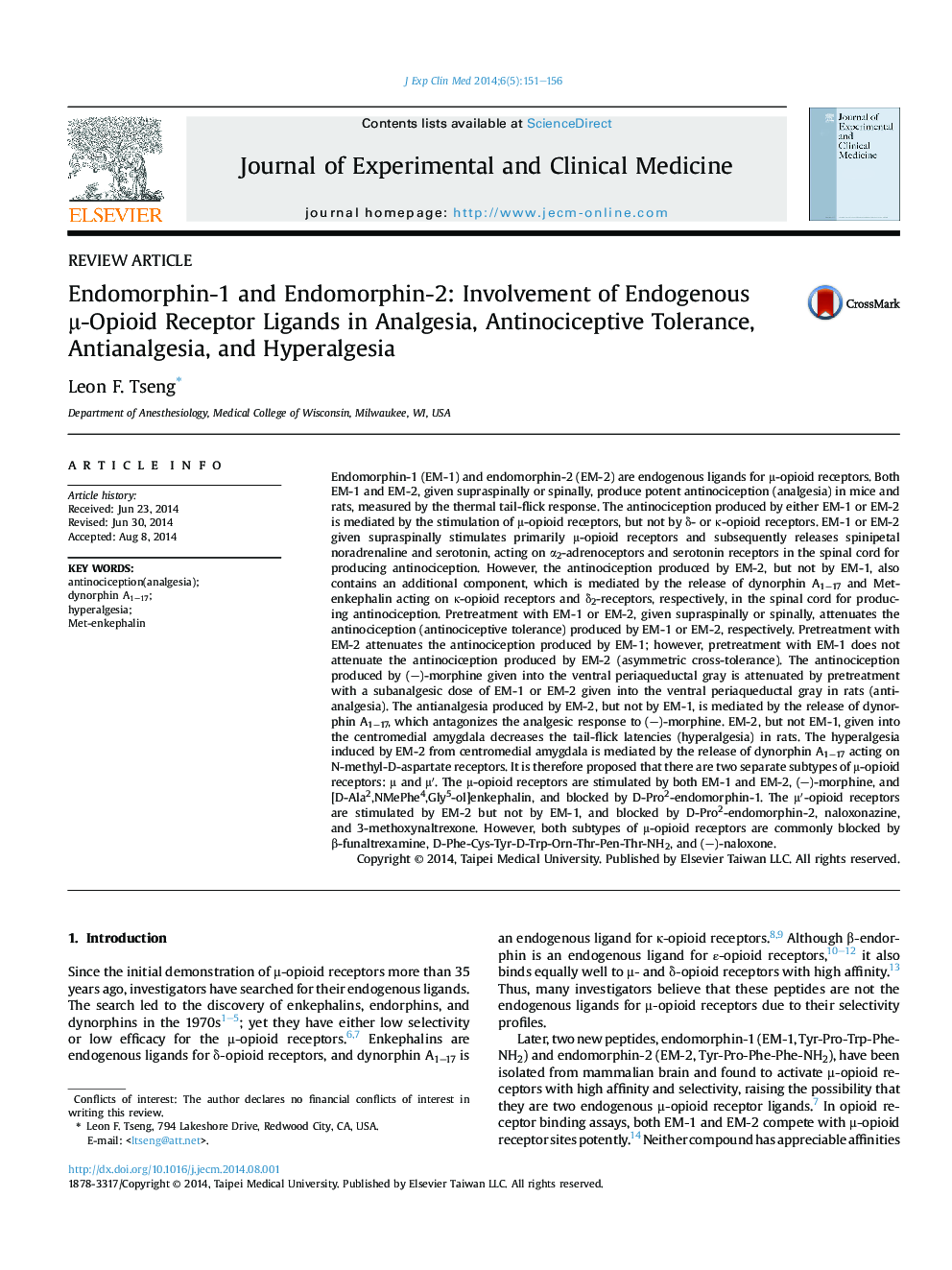| کد مقاله | کد نشریه | سال انتشار | مقاله انگلیسی | نسخه تمام متن |
|---|---|---|---|---|
| 3477759 | 1233361 | 2014 | 6 صفحه PDF | دانلود رایگان |

Endomorphin-1 (EM-1) and endomorphin-2 (EM-2) are endogenous ligands for μ-opioid receptors. Both EM-1 and EM-2, given supraspinally or spinally, produce potent antinociception (analgesia) in mice and rats, measured by the thermal tail-flick response. The antinociception produced by either EM-1 or EM-2 is mediated by the stimulation of μ-opioid receptors, but not by δ- or κ-opioid receptors. EM-1 or EM-2 given supraspinally stimulates primarily μ-opioid receptors and subsequently releases spinipetal noradrenaline and serotonin, acting on α2-adrenoceptors and serotonin receptors in the spinal cord for producing antinociception. However, the antinociception produced by EM-2, but not by EM-1, also contains an additional component, which is mediated by the release of dynorphin A1–17 and Met-enkephalin acting on κ-opioid receptors and δ2-receptors, respectively, in the spinal cord for producing antinociception. Pretreatment with EM-1 or EM-2, given supraspinally or spinally, attenuates the antinociception (antinociceptive tolerance) produced by EM-1 or EM-2, respectively. Pretreatment with EM-2 attenuates the antinociception produced by EM-1; however, pretreatment with EM-1 does not attenuate the antinociception produced by EM-2 (asymmetric cross-tolerance). The antinociception produced by (–)-morphine given into the ventral periaqueductal gray is attenuated by pretreatment with a subanalgesic dose of EM-1 or EM-2 given into the ventral periaqueductal gray in rats (antianalgesia). The antianalgesia produced by EM-2, but not by EM-1, is mediated by the release of dynorphin A1–17, which antagonizes the analgesic response to (–)-morphine. EM-2, but not EM-1, given into the centromedial amygdala decreases the tail-flick latencies (hyperalgesia) in rats. The hyperalgesia induced by EM-2 from centromedial amygdala is mediated by the release of dynorphin A1–17 acting on N-methyl-D-aspartate receptors. It is therefore proposed that there are two separate subtypes of μ-opioid receptors: μ and μ′. The μ-opioid receptors are stimulated by both EM-1 and EM-2, (–)-morphine, and [D-Ala2,NMePhe4,Gly5-ol]enkephalin, and blocked by D-Pro2-endomorphin-1. The μ′-opioid receptors are stimulated by EM-2 but not by EM-1, and blocked by D-Pro2-endomorphin-2, naloxonazine, and 3-methoxynaltrexone. However, both subtypes of μ-opioid receptors are commonly blocked by β-funaltrexamine, D-Phe-Cys-Tyr-D-Trp-Orn-Thr-Pen-Thr-NH2, and (–)-naloxone.
Journal: Journal of Experimental & Clinical Medicine - Volume 6, Issue 5, October 2014, Pages 151–156